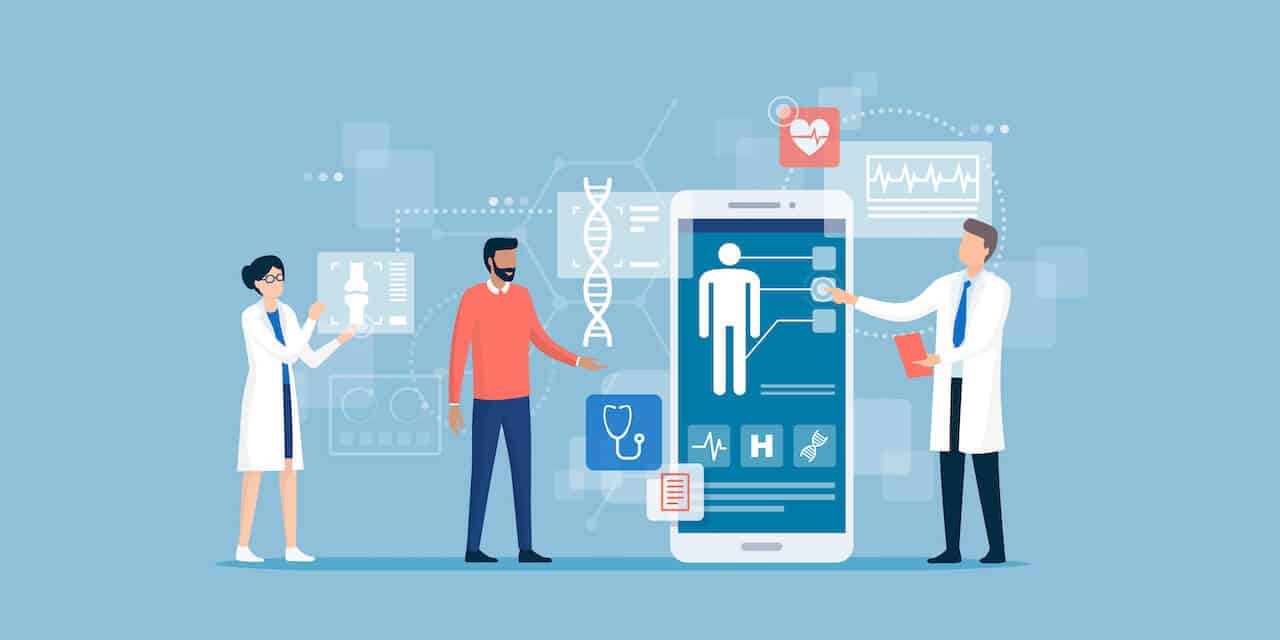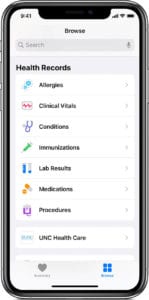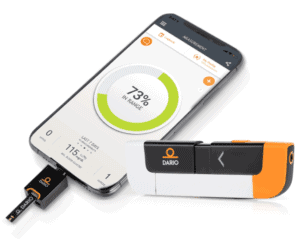
One of the fastest-growing segments of healthcare technology is support for improved patient engagement.
A 2019 survey indicated that 81% of hospital and health system executives identified improving patient experience as a high priority for their organization.
As more people become accustomed to (and comfortable with) using technology to manage their health, the quality and design of technology systems have become crucial elements of delivering a great experience.
However, before we look at patient engagement technology, let’s define patient engagement.
What Is Patient Engagement?
“Patient engagement” is a strategy that enables and encourages patients to be more active in managing their health.
A patient engagement strategy should:
- Empower patients and their loved ones to be active in their own care
- Result in better health and improved outcomes
- Reduce costs for health systems
These goals can mean different things to different providers. More important, however, is the goal of increasing patient engagement is to improve the patient experience.
Patient Experience
Many healthcare organizations fall into the trap of equating increased engagement with a better experience.
Creating a portal that patients are required to log into increases engagement, but is it always improving the patient experience?
Part of the intent behind an Interactive Voice Response (IVR) phone tree may be to get patients to the right contact center agent or clinician faster. But does this always work out for the patients?
If the user experience of a portal or a phone system tree is well-designed, the patient experience will be improved. If the navigation within a portal or the design of an IVR is frustrating, the patient experience will become worse, not better. In the case of an IVR, disconnects, poor voice recognition and a lack of the right information can all result in patient frustration.
When implemented correctly, patient engagement technology will improve your patient’s healthcare experience.
Technologies for Enabling Engagement
More and better technology options can make patient engagement more effective.
There is a growing list of technology platforms and resources that can be applied to patient engagement applications. Some of these are specific to healthcare. Others are general-purpose platforms that can be applied to healthcare.
1. Customer Relationship Management (CRM) software such as Salesforce is a platform for Patient Relationship Management. Salesforce Health Cloud is the adaptation of CRM for healthcare.
2. Gateway software for creating interoperability among PRM and clinical systems such as EHRs.
3. Contact center telephony and chat from companies like RingCentral and Amazon.
4. Video platforms such as Vonage’s Video API.
5. Texting platforms such as Twilio’s SMS APIs.
These and other technologies are often seamlessly integrated into the patient journey. For example, social media channels like Facebook and YouTube can be effective engagement technologies.
However, technology on its own is not enough to improve patient engagement. It’s up to management, IT, patients, doctors, and clinicians to deploy and use these tools in a way that makes meaningful experiences and measurable improvements.
Before purchasing a specific patient engagement technology solution, a health system should define the goals it wants to achieve and the value it wants to deliver.
Professionally designed solutions that increase patient engagement
Patient Engagement Technology Applications
There is a wide array of different options for implementing a patient engagement strategy. The most common solutions include:
Patient Portals
Patient portals are typically secure online websites that give patients convenient, 24-hour access to data about personal health. From any computer or mobile device, patients can view health information such as:
- Recent visits
- Medications
- Results from Lab Tests
- Immunizations
- Allergies
In addition, patient portals allow patients to securely communicate with their care team, schedule appointments, request prescription refills, pay bills, and take care of other common tasks.
Some healthcare providers integrate their patient portals with patient engagement solutions, such as Salesforce Health Cloud. Others use the capabilities of a CRM platform to develop a full patient experience and create more of a sense of community.
Many health systems are making health records available to patients on their mobile devices or tablet. Apple, for example, lists all the institutions that support health record access on iPhones or iPads.

Telehealth Interactions
Telehealth refers to using technology to support and promote long-distance clinical healthcare, patient / professional health-related education, public health, and health administration.
Telehealth services increase patient engagement in several ways. Benefits include:
- More timely interactions
- Higher quality services
- Reduced costs for the organization providing the services
- Greater staff efficiency
- No need for the person being coached or counseled to travel
Telehealth is rapidly becoming the go-to patient engagement solution for providing certain healthcare services to rural and remote populations that otherwise would have minimal or no access to health services.
Efficient Contact Center Interactions
When a patient picks up the phone or initiates a chat, they want to get the right information or get to the right person quickly and with minimal effort. This situation is where the combination of the right technology and proper design and optimized staffing is critical.
Using omni-channel technology, a patient can easily communicate with the right agent and then be smoothly handed off to a clinician if needed.

Medical Device Interfaces and Patient Support
More people are using in-home medical devices than ever before for the treatment of their condition(s). The key to improved outcomes and patient satisfaction is the safe and effective use of these devices.
An increasing number of these devices are reliant on mobile apps. Downloading, running, and using device apps can be challenging for some patients.

Since in-person training on devices and related apps has become a less available option, technologies, such as the above-mentioned telehealth, can be used to bridge the training gap.
End users can also be given remote support on device or app usage via a hotline, email, text, or chat. The technology involved is omnichannel contact center software.
As the healthcare industry increasingly deploys contemporary call center technologies, health systems, and clinics can better engage with patients whose care is given in a home setting.
Appointment Reminders
Most patients now expect automated appointment reminders via phone, email, or text message, and third-party reminder software can be integrated with EHR, CRM, spreadsheets, and calendars.
The content of reminder messages is an overlooked patient engagement factor, however. The tone of a message should not be overly mechanical, and the message should contain useful information for the patient in terms of preparing for and arriving at an appointment. The words used can reflect the personality of a practice, so paying attention to tone is necessary.
An Engagement Strategy
Creating an engagement strategy requires first evaluating functional areas in which patient experience needs improvement, which means:
- Differentiating the quality of patient interactions from other health systems.
- Assembling the right team — people who understand the business of healthcare, participants who understand patient communication, and individuals who know how to configure and implement the technologies.
- Selecting the right technology stack to support the business goals.
Learn about J2 Interactive’s Health Cloud services


